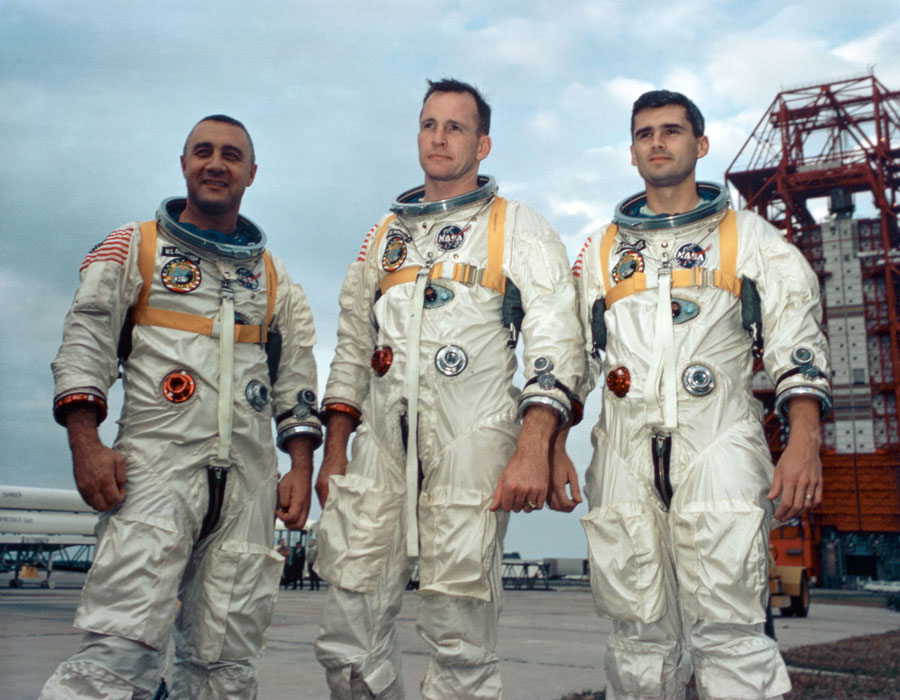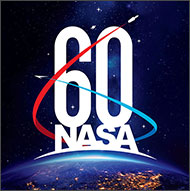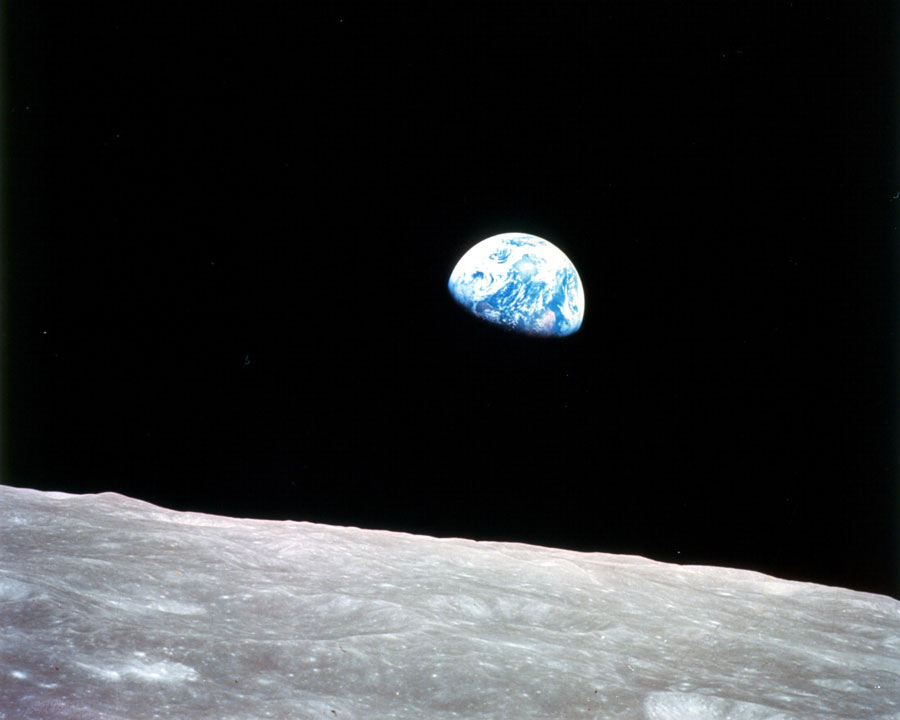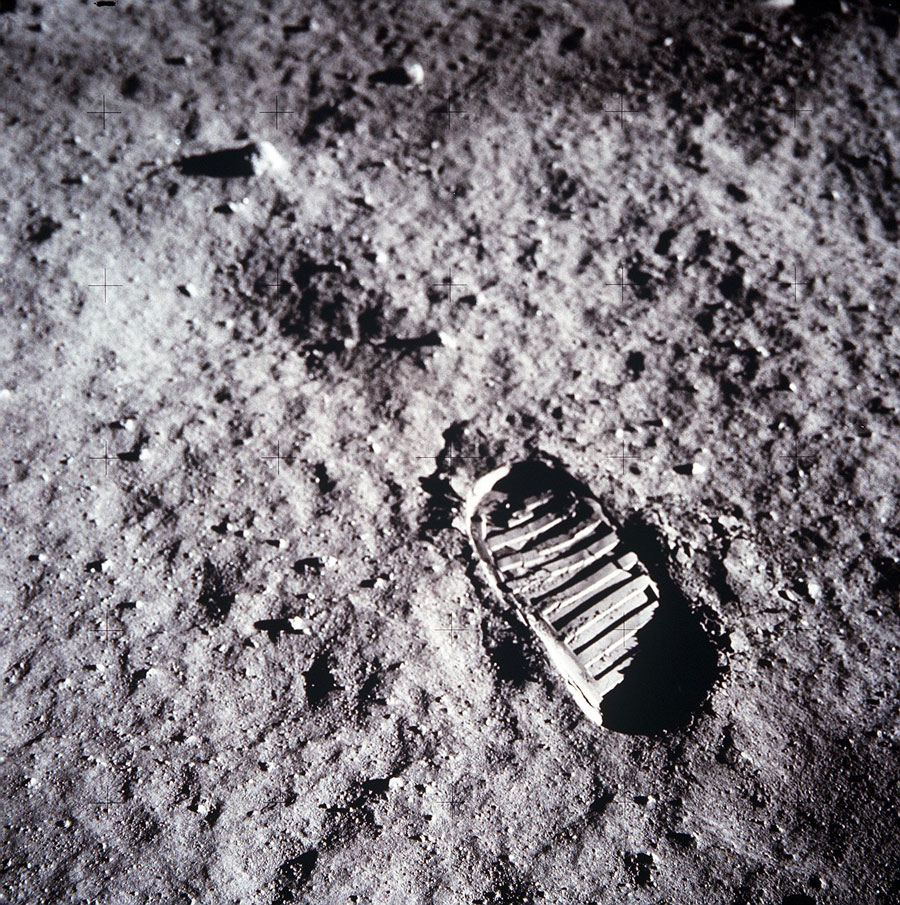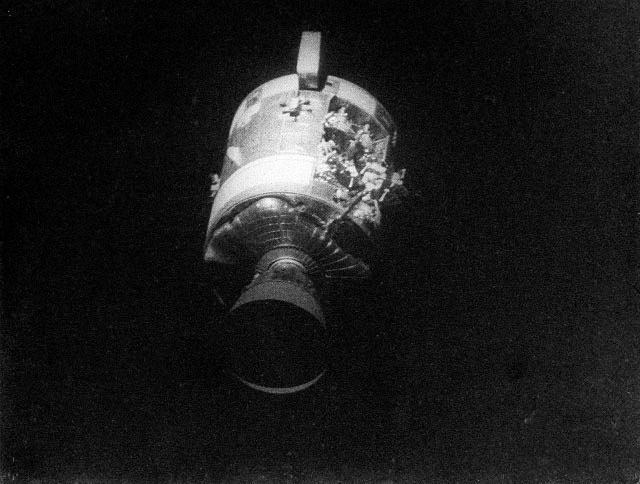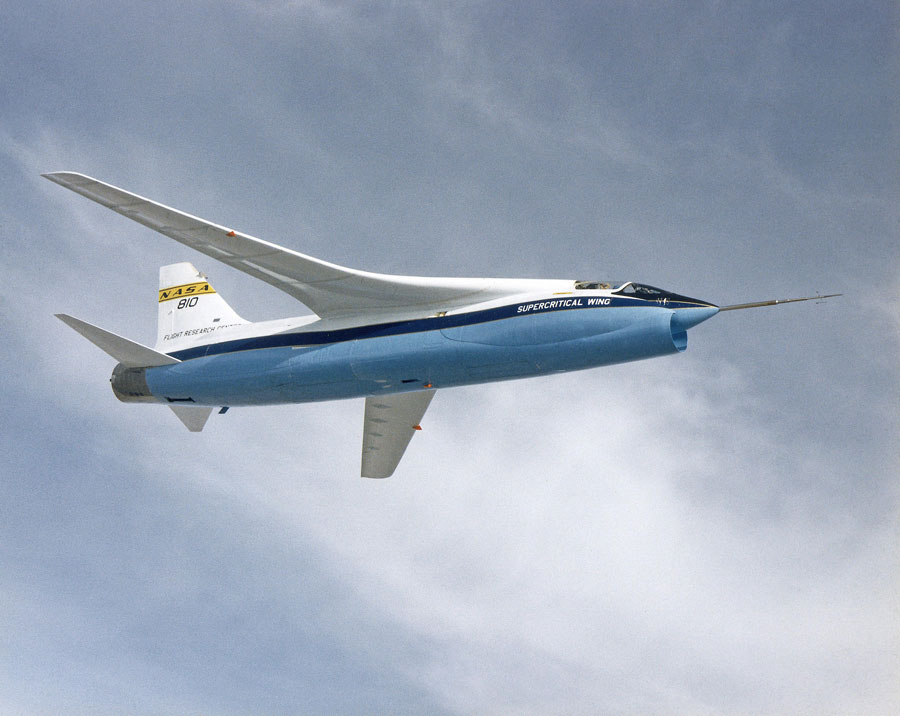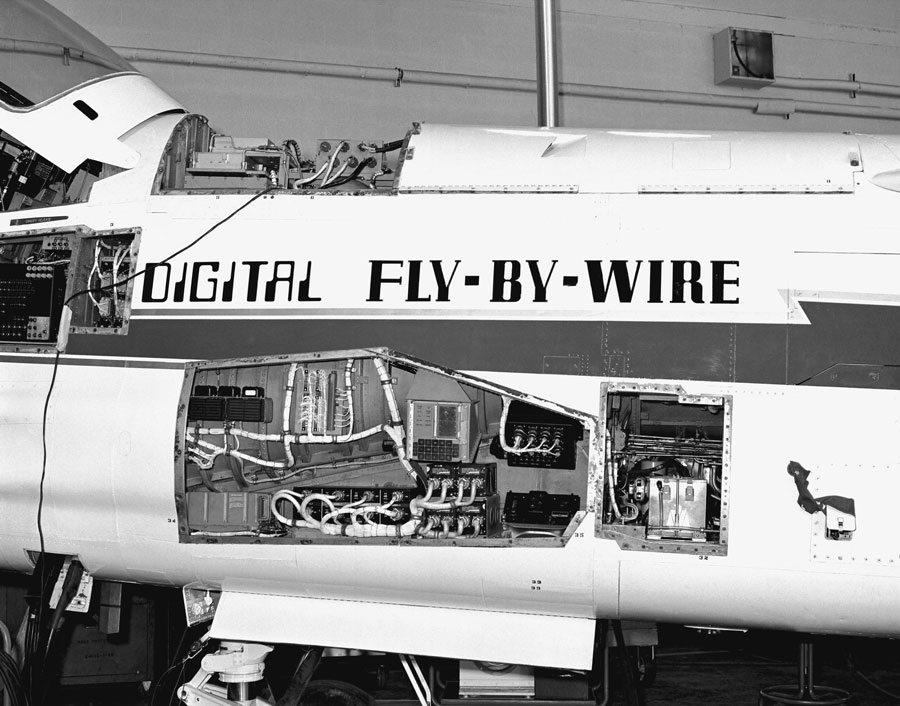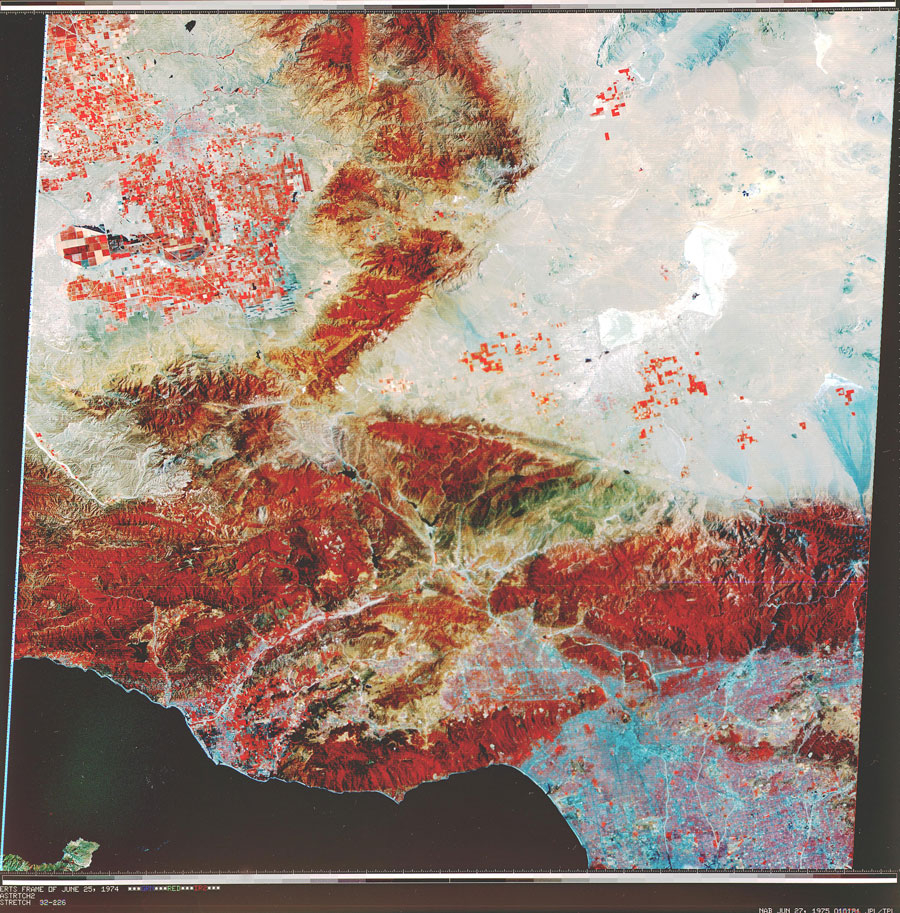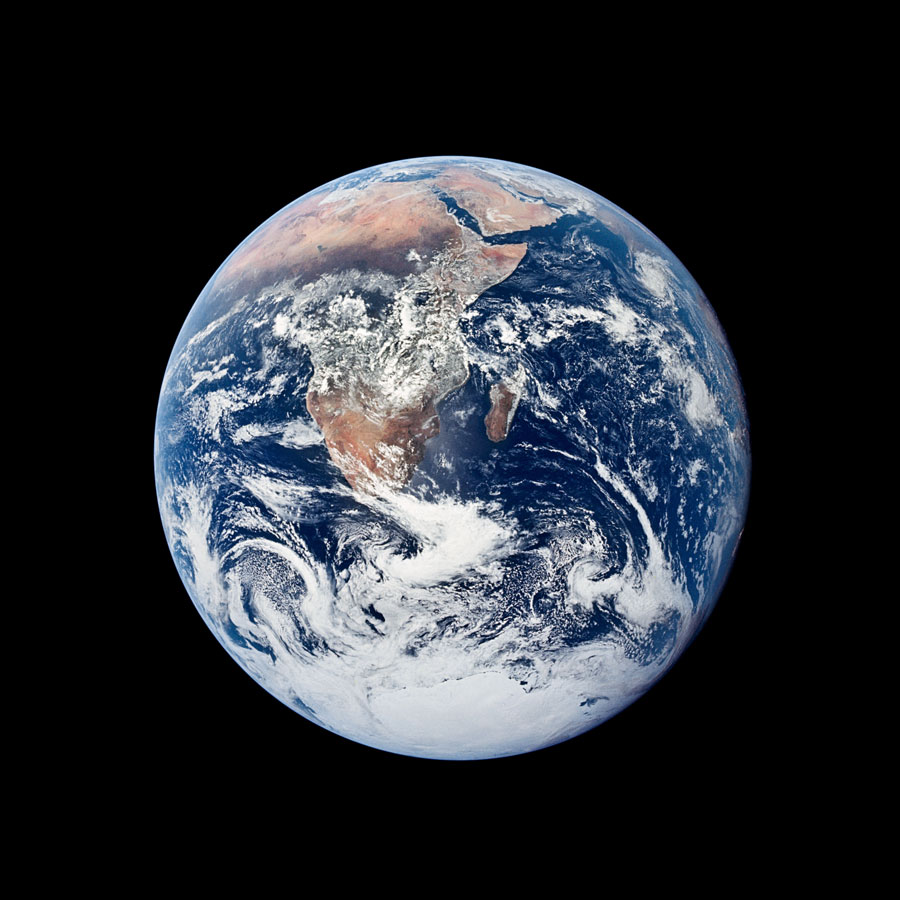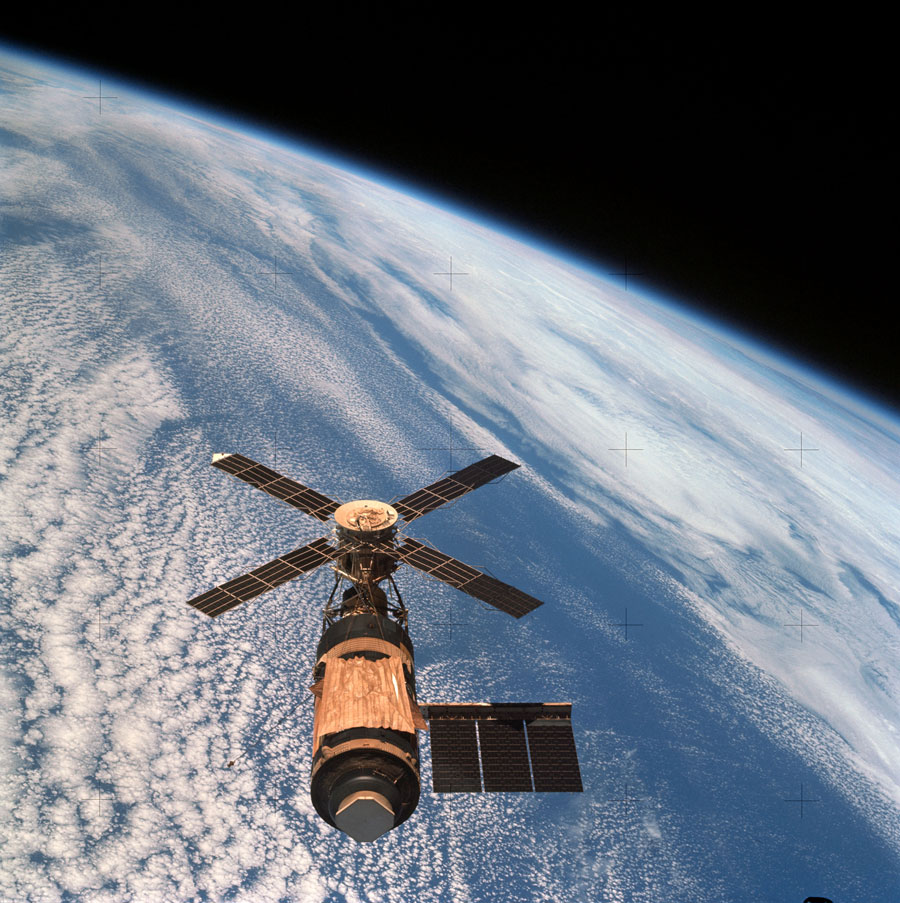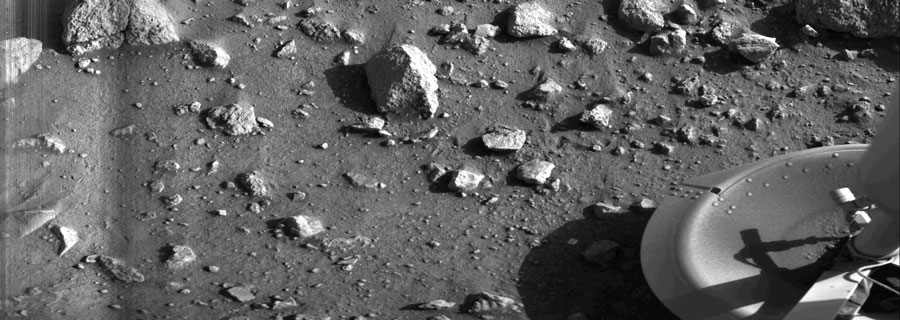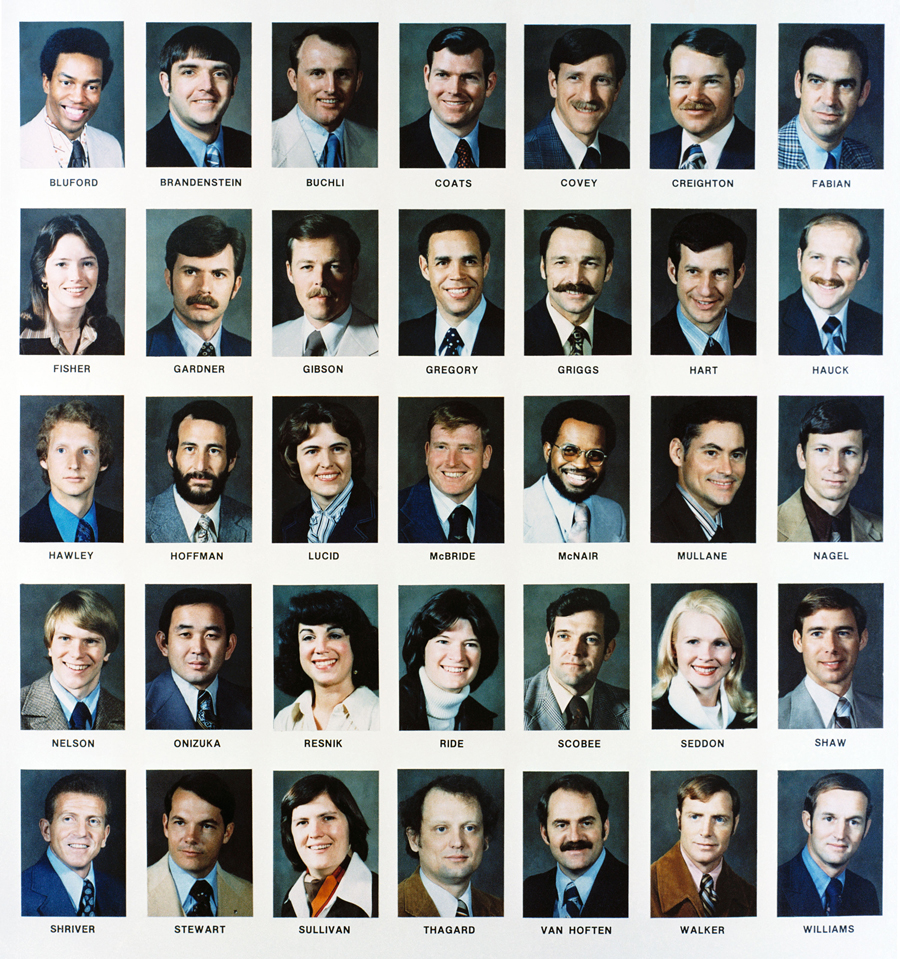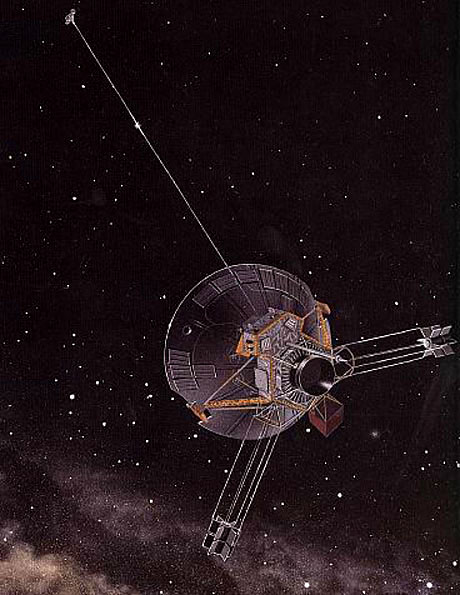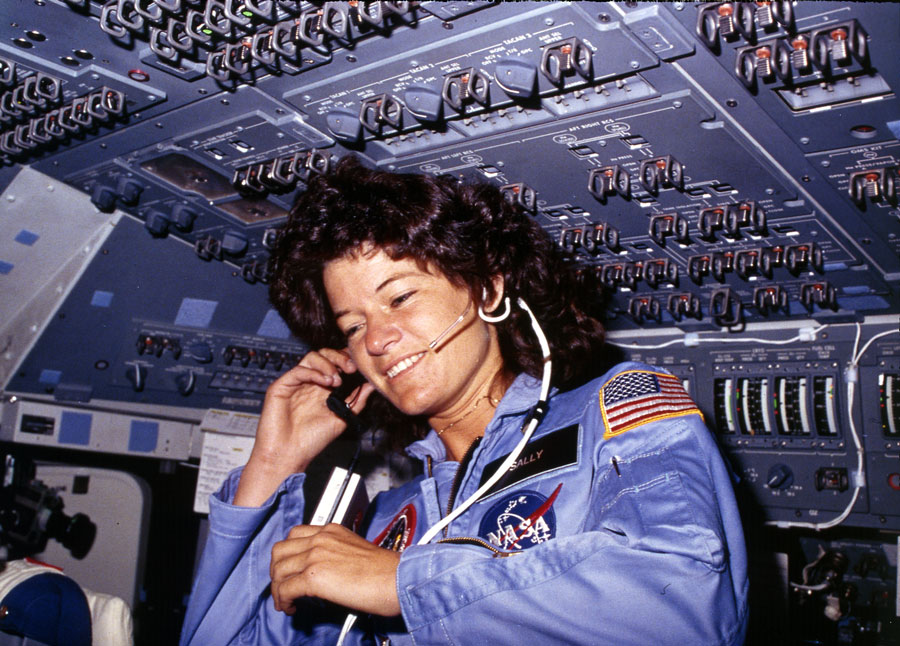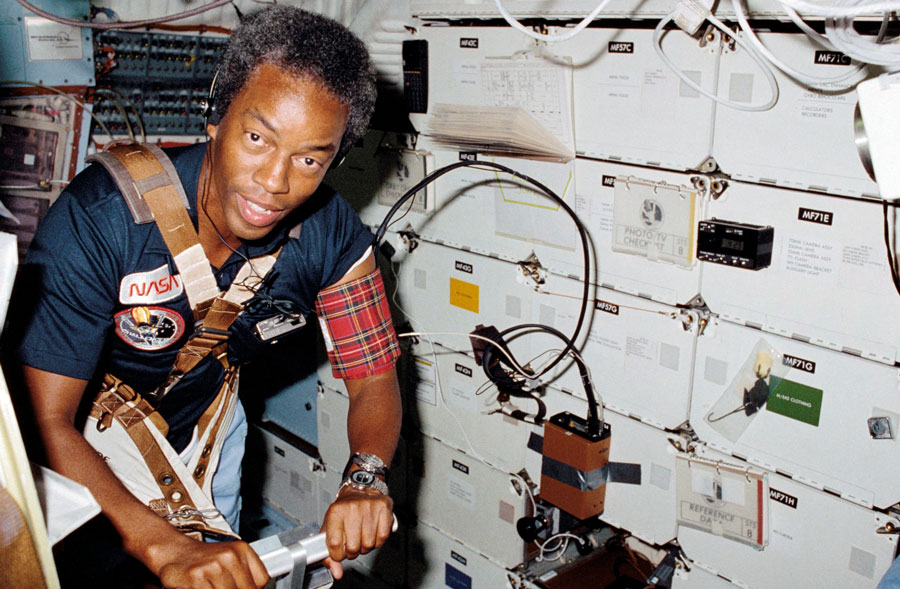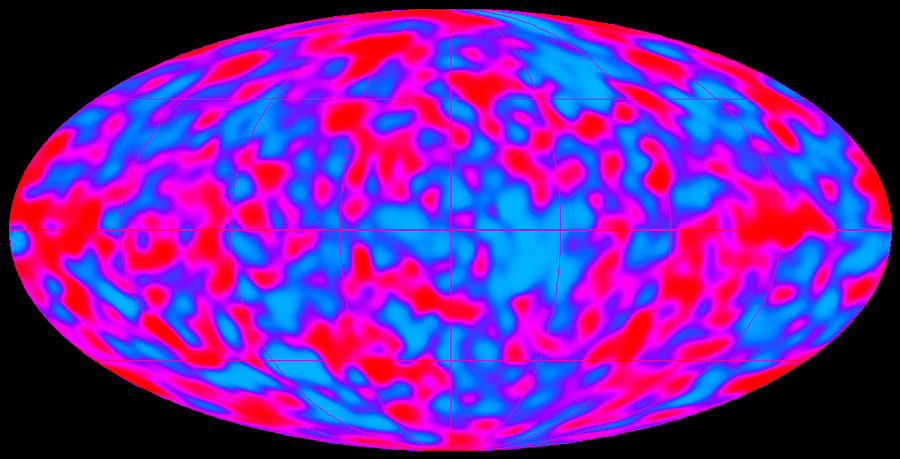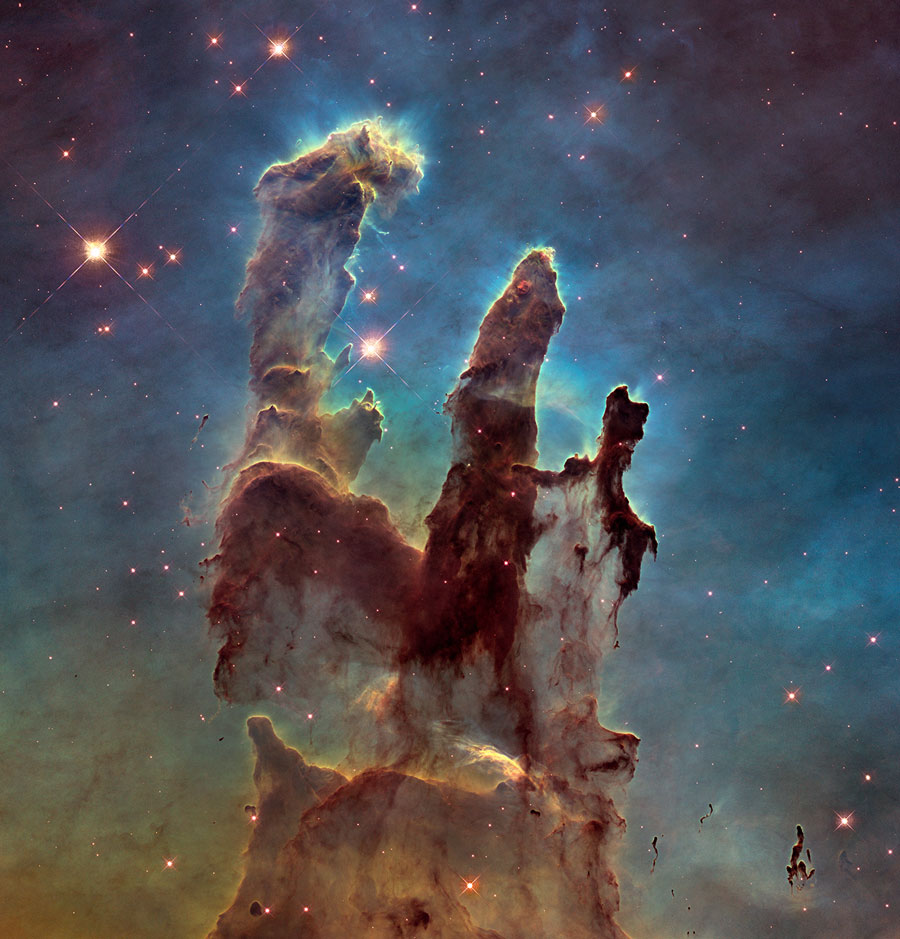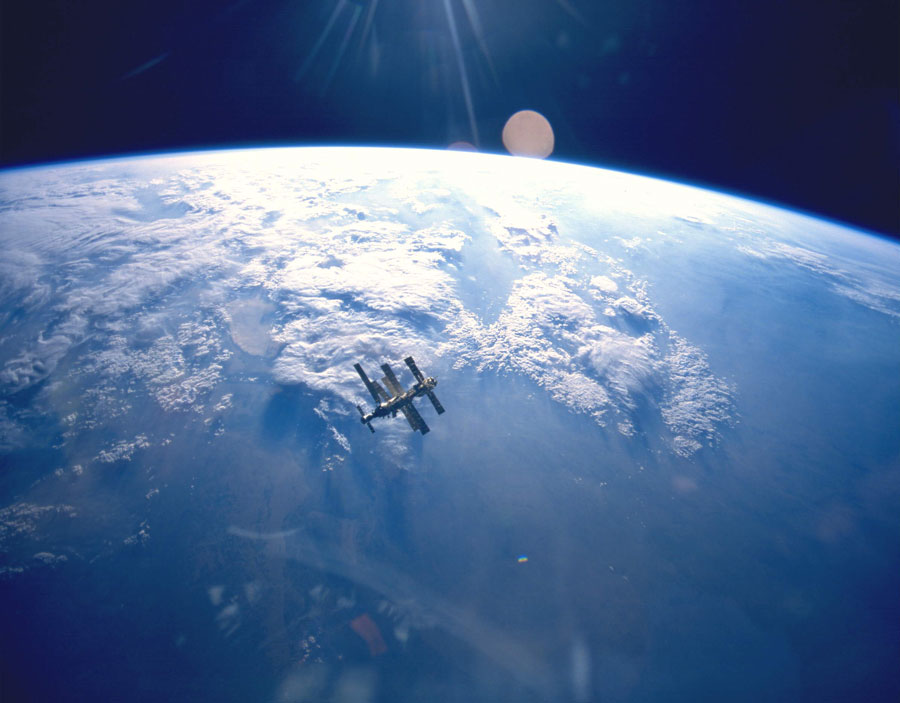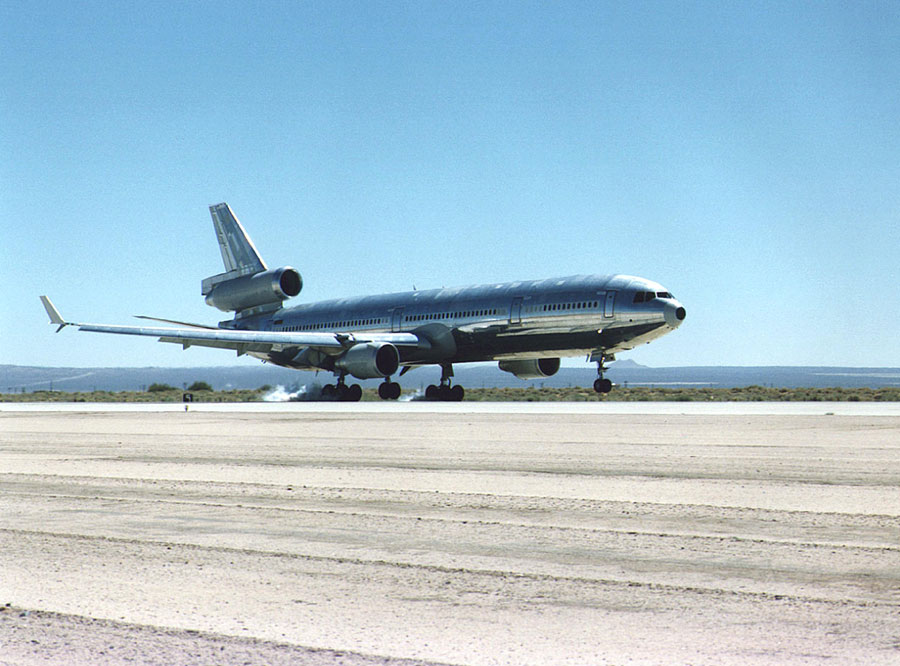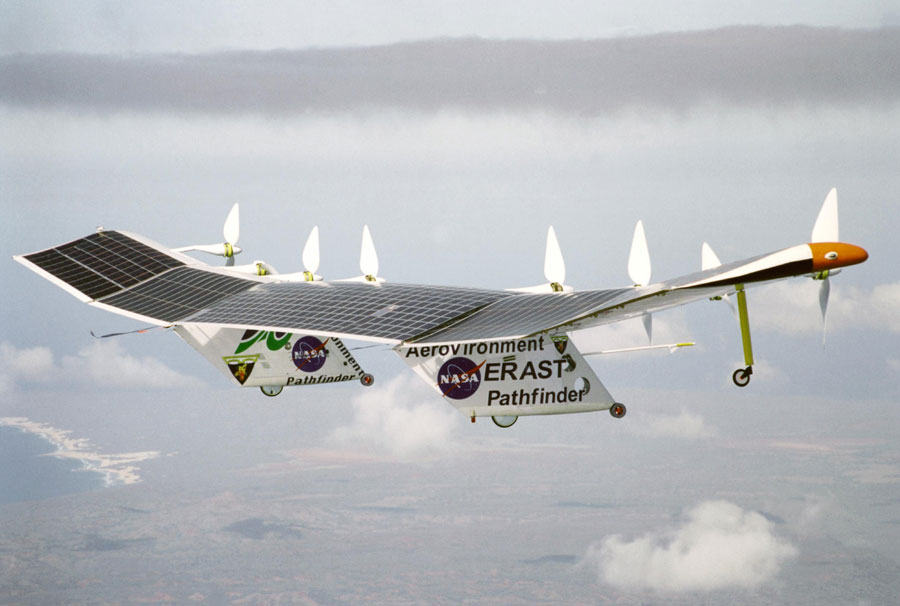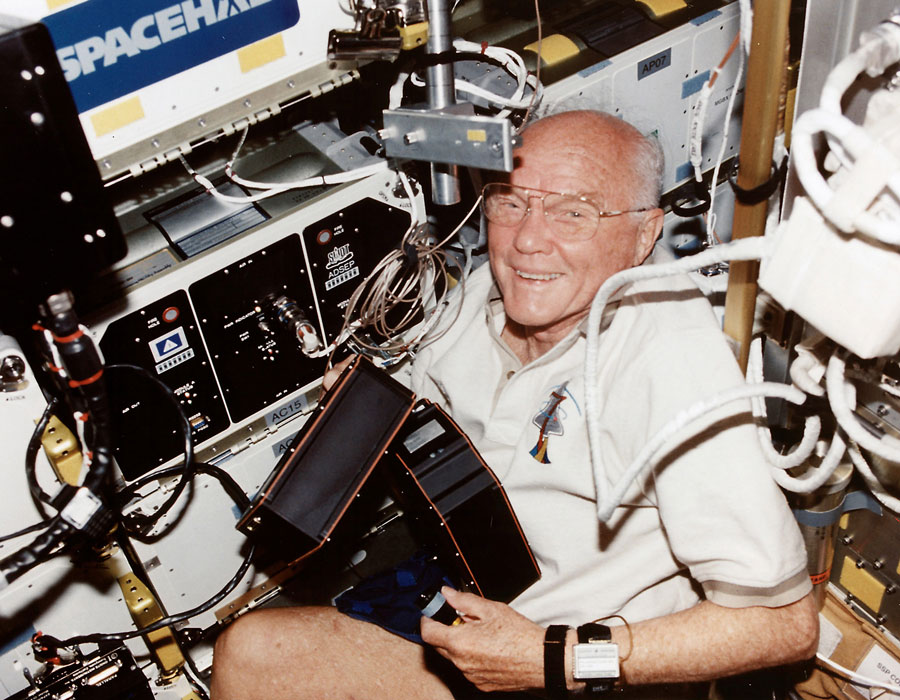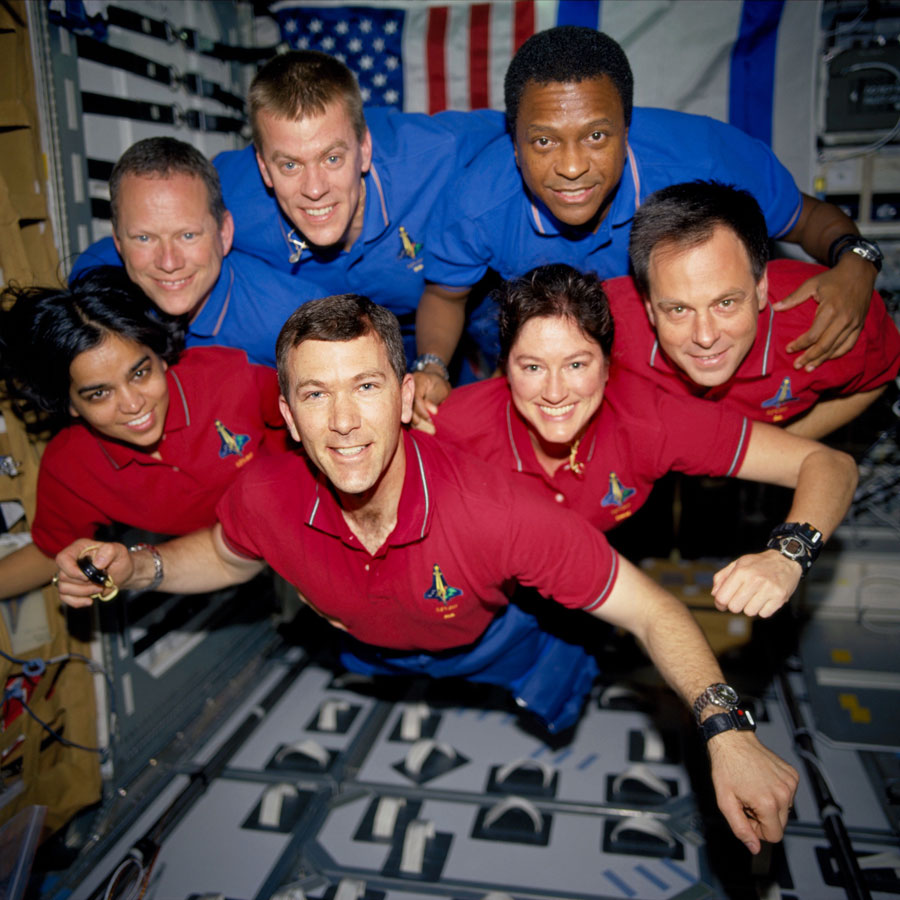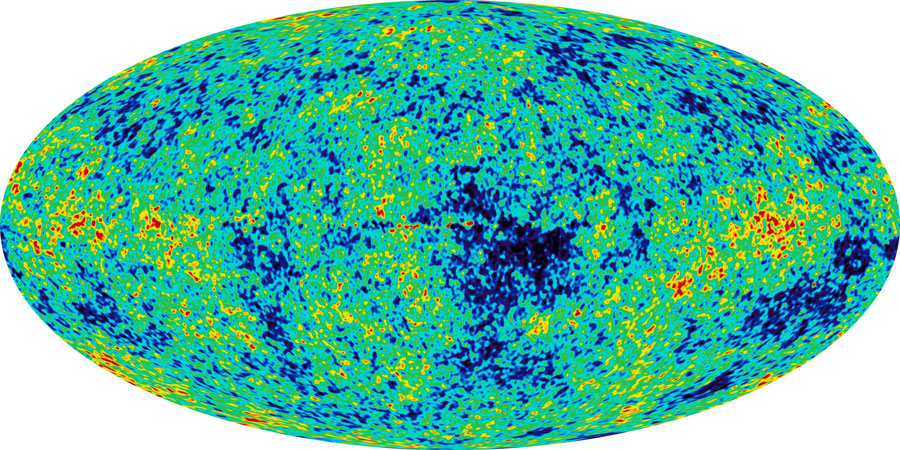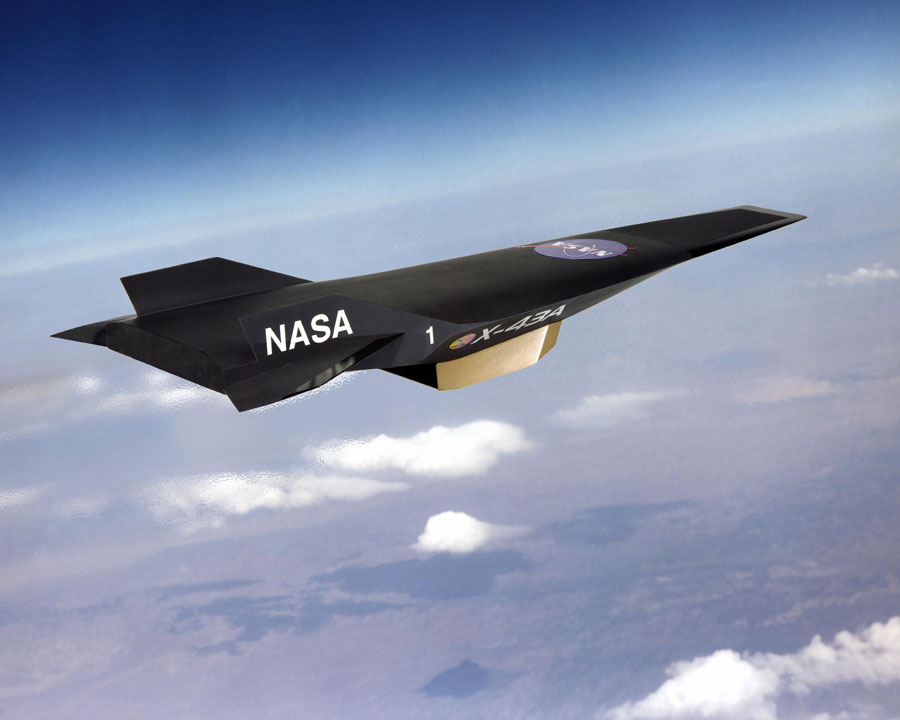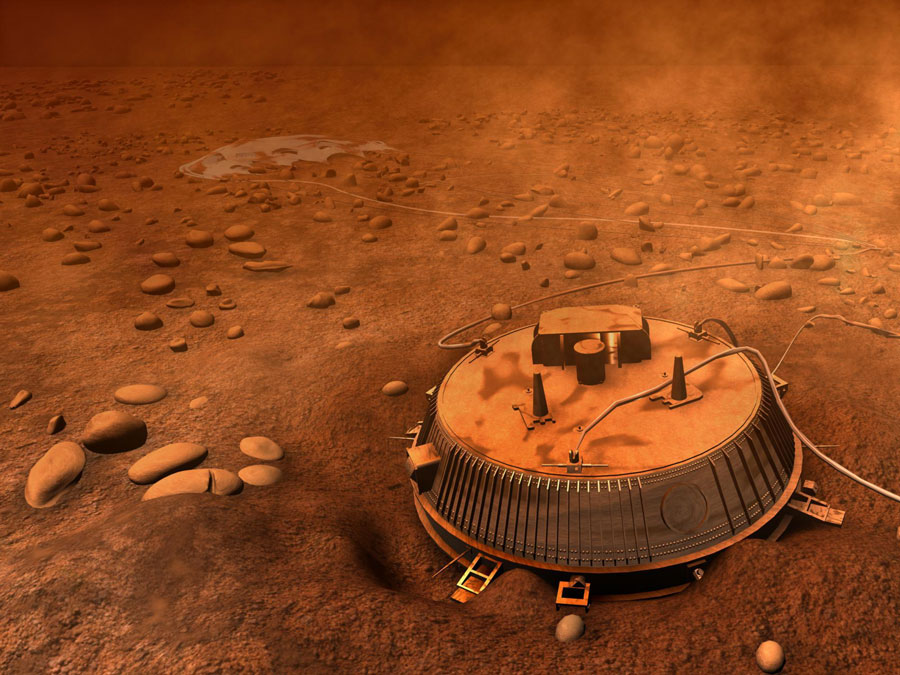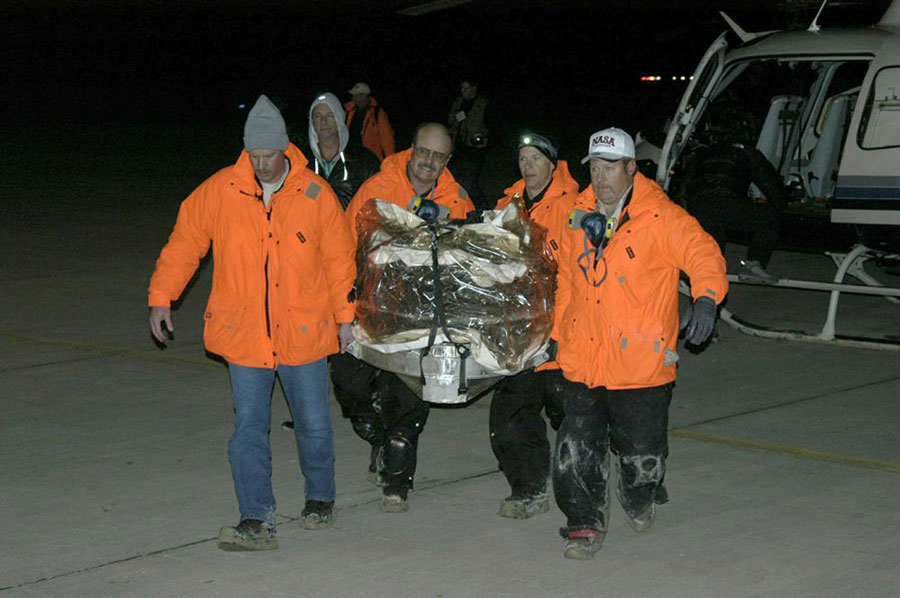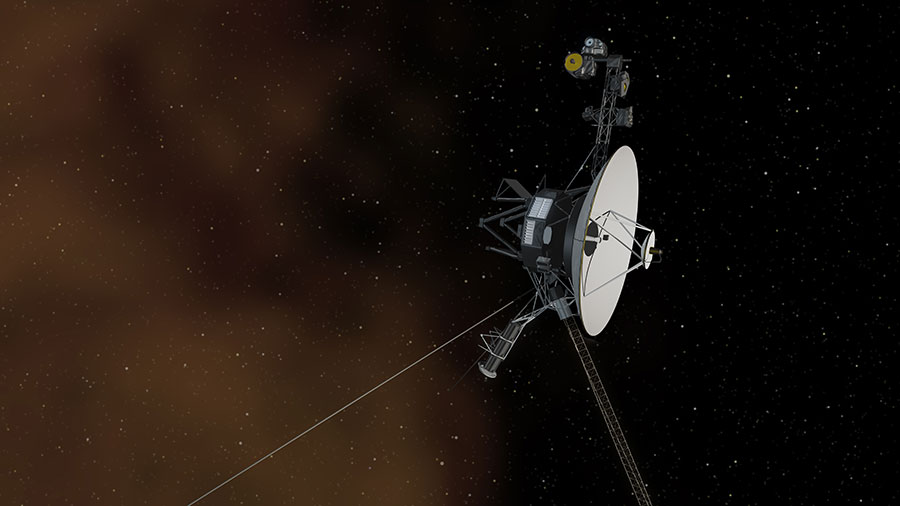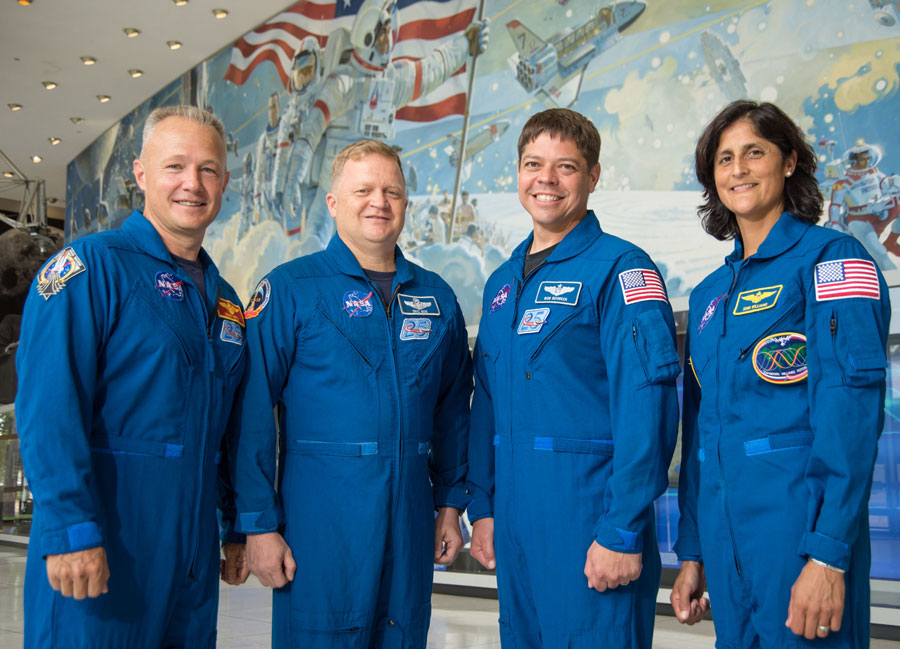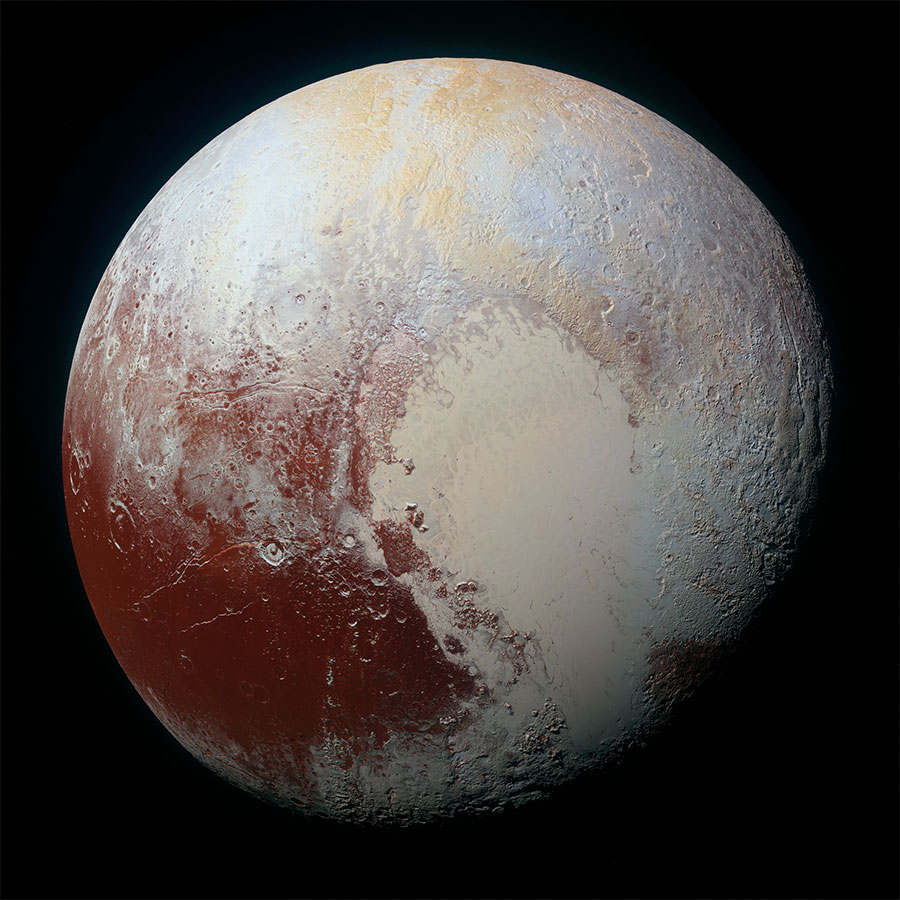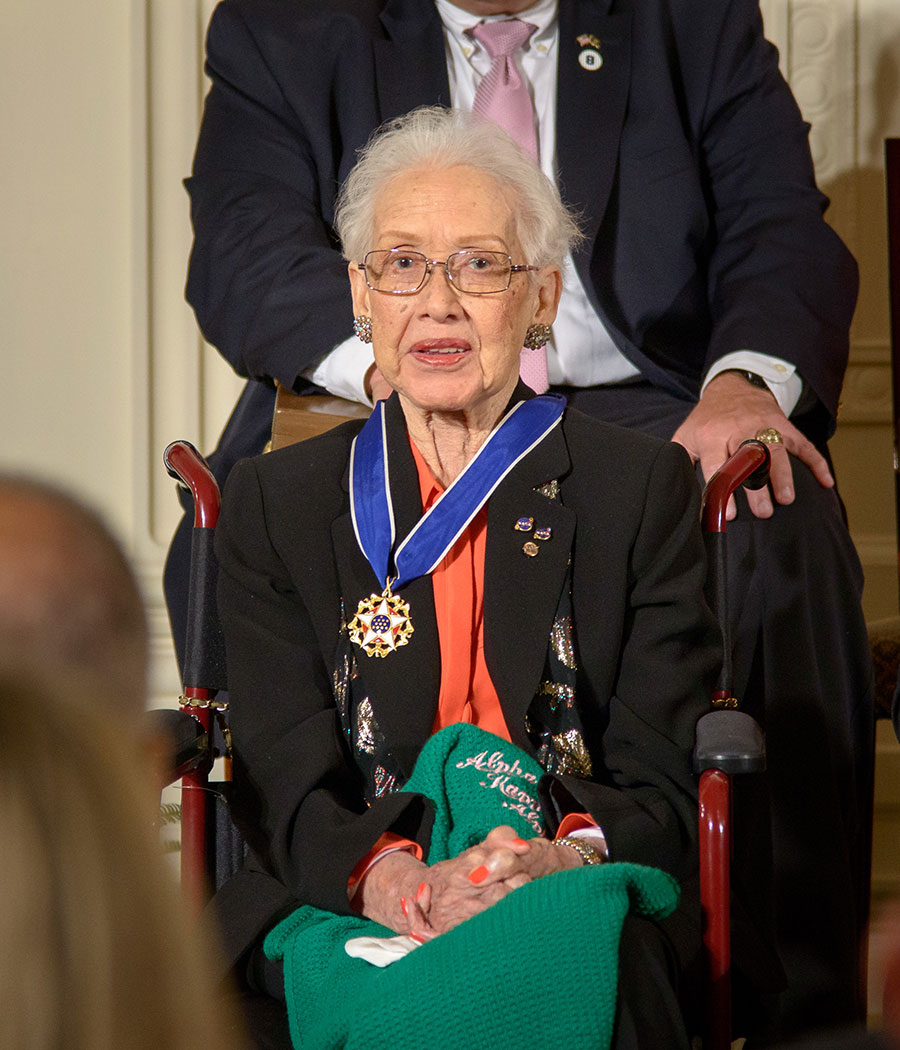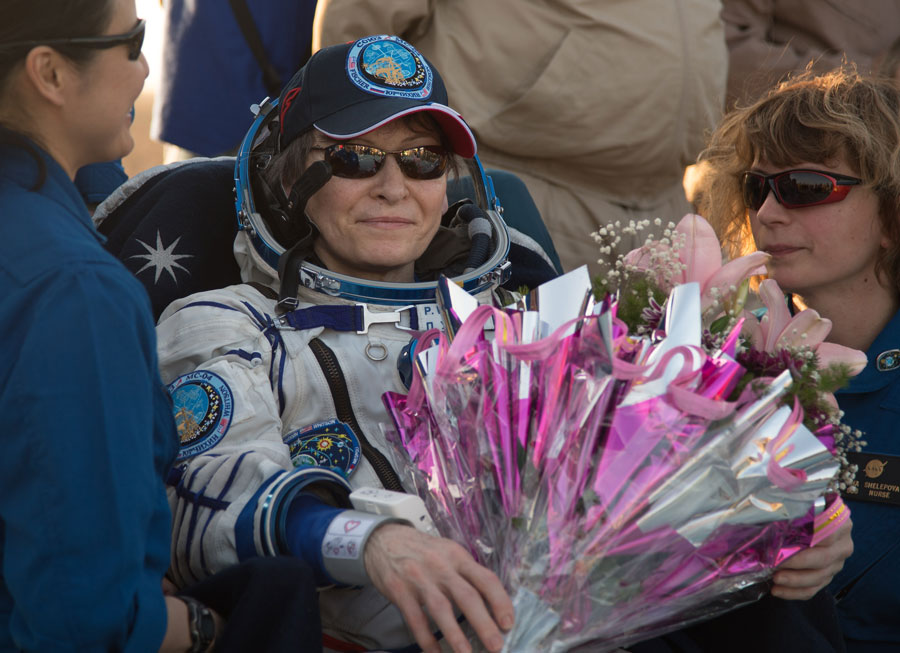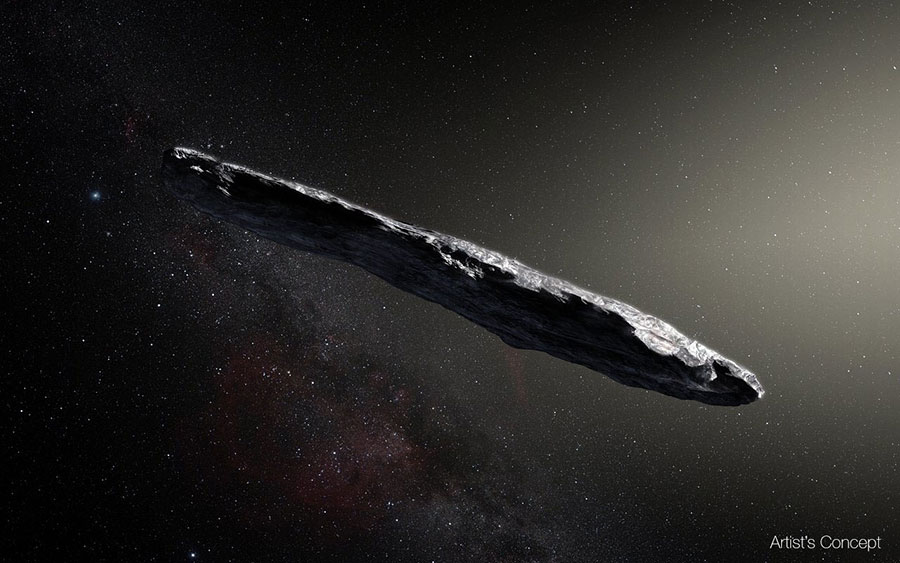President Eisenhower signs the National Aeronautics and Space Act, creating the agency, which was based on the National Advisory Committee for Aeronautics when it opens for business on Oct. 1, 1958. He is shown here in August giving commissions to T. Keith Glennan (right) and Hugh L. Dryden (left), NASA's first administrator and deputy administrator respectively.

NASA launches Pioneer 1. A project inherited from the U.S. Army, Pioneer 1 became NASA’s first spacecraft. Meant to go into lunar orbit and carrying a TV camera to study the moon's surface, a mechanical problem limited the spacecraft to sending 43 minutes of data back before re-entering the Earth's atmosphere.
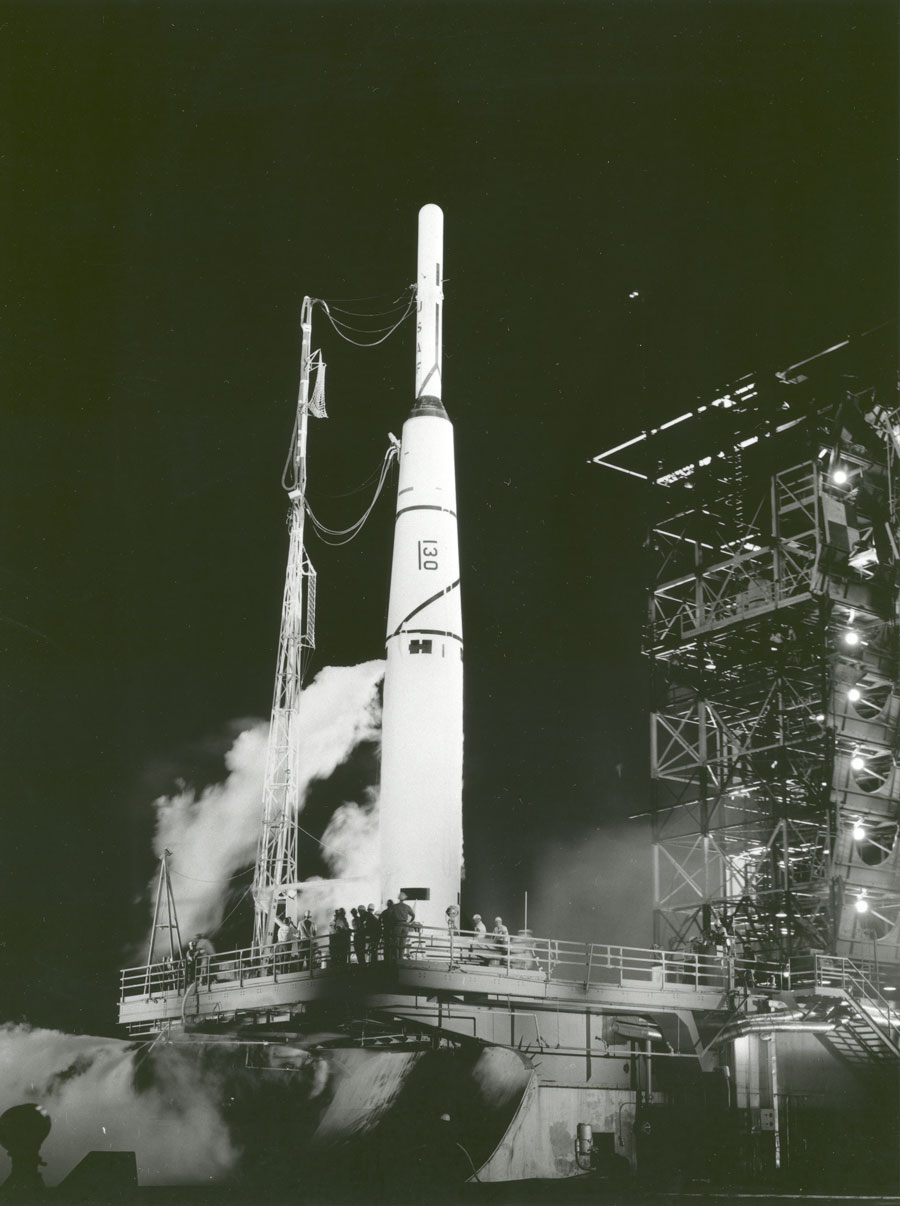
At a press conference in Washington, NASA introduces the first American astronauts, the Mercury 7. All experienced military test pilots, they had undergone an incredible battery of physical and mental examinations.

NASA launches TIROS 1, the first weather satellite. Crude by modern standards, this is the first television image from space. Tiros 1 operated for only 78 days but proved scientists could monitor the Earth's weather patterns and cloud cover from space.
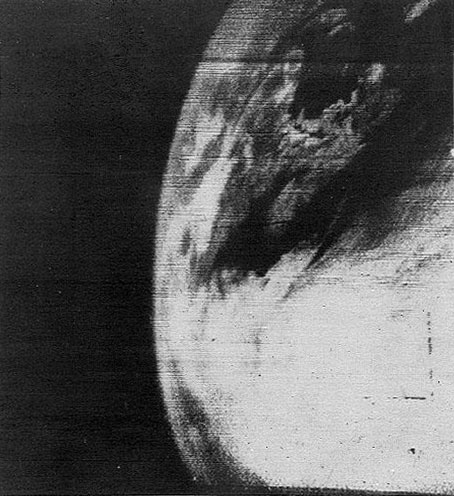
NASA launches ECHO 1, the first communications satellite. Echo was a passive satellite; it reflected radio and radar signals rather than generating or relaying them. Scientists were also able to track it as a way of understanding the upper layers of Earth’s atmosphere.
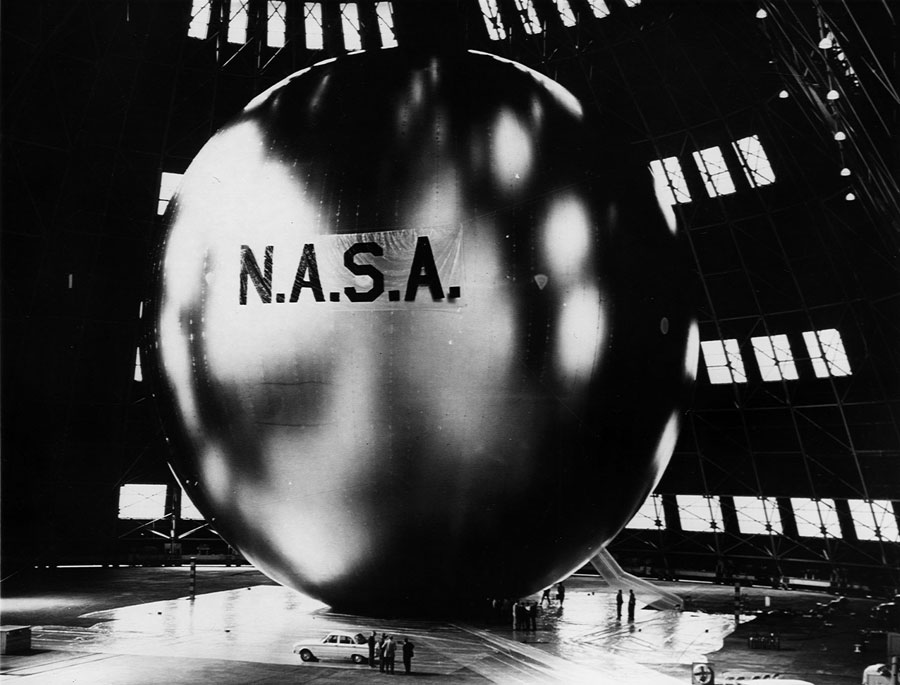
Alan Shepard becomes the first American in space, making a 15-minute suborbital flight.
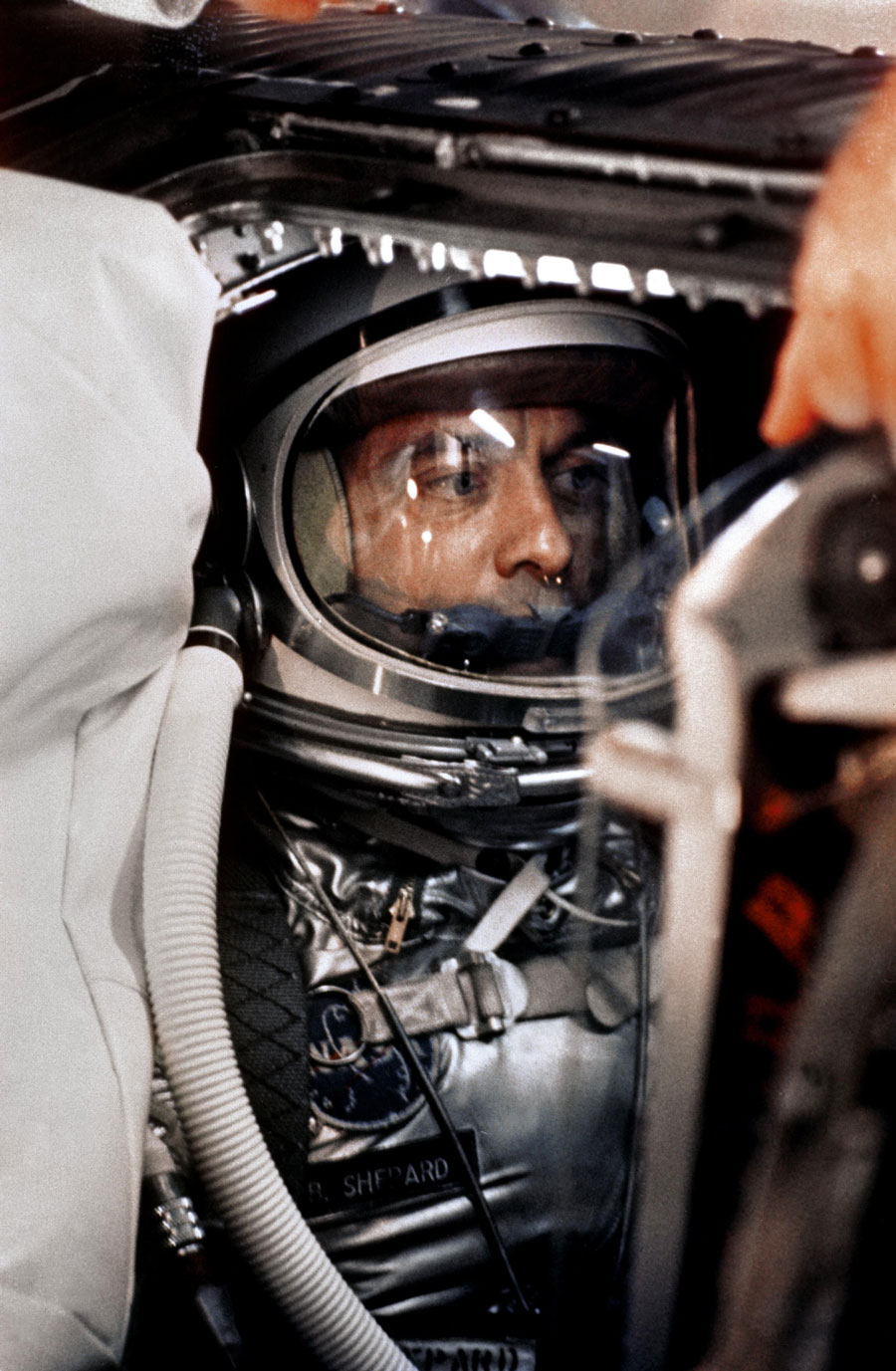
Three weeks after the first U.S. astronaut flies, President Kennedy announces the audacious goal of landing a man on the Moon before the end of the decade. The challenge to NASA was immense; the agency had only rough plans for a Moon landing in several decades. But once the goal was set, NASA responded.

The second major step toward the Moon was putting a man in orbit. Astronaut John Glenn got that job, making three laps around the Earth in just under five hours.

NASA launches the communications satellite Telstar I, the first active communications satellite and, also the first satellite launched for a private company. Telstar was built and operated by the American Telephone and Telegraph Company (AT&T). On July 23, it relayed the first publicly available transatlantic TV signal, showing pictures of the Statue of Liberty and the Eiffel Tower, part of a baseball game and remarks by President Kennedy on the value of the American dollar, which was causing concern in Europe. When Kennedy denied that the United States would devalue the dollar, it immediately strengthened on world markets. CBS news anchor Walter Cronkite, also on the broadcast, later said that "We all glimpsed something of the true power of the instrument we had wrought."
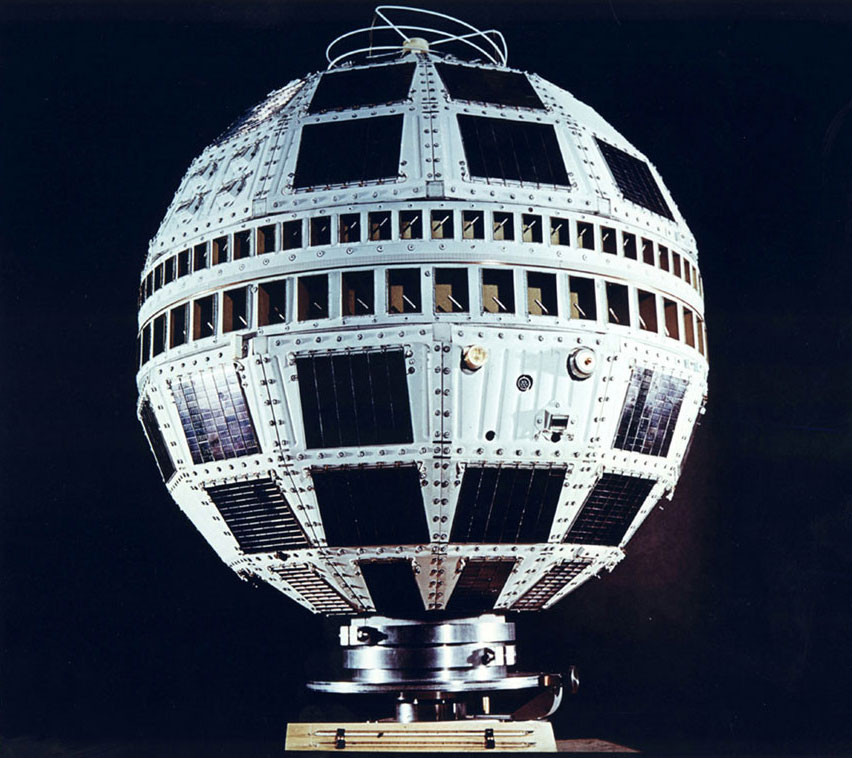
Mariner 2 flies past the planet Venus in the first space mission to study another planet at close range. Among many other things, the spacecraft discovered that Venus had no magnetic field
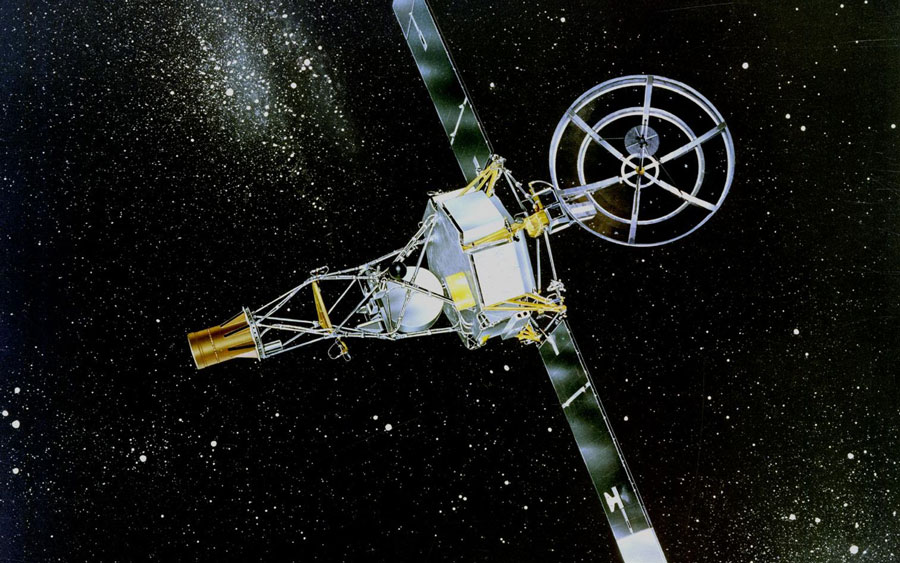
NASA launches Intelsat 1 for the Communications Satellite Corporation (COMSAT). Built by Hughes Aircraft Company, Intelsat 1 (known as Early Bird at the time) was the first communications satellite placed in a geosynchronous orbit. From Earth the satellite appears to stay in one spot in the sky, making for a very simple and robust way to use satellites for communications. This idea had been popularized by Arthur C. Clarke in 1945.
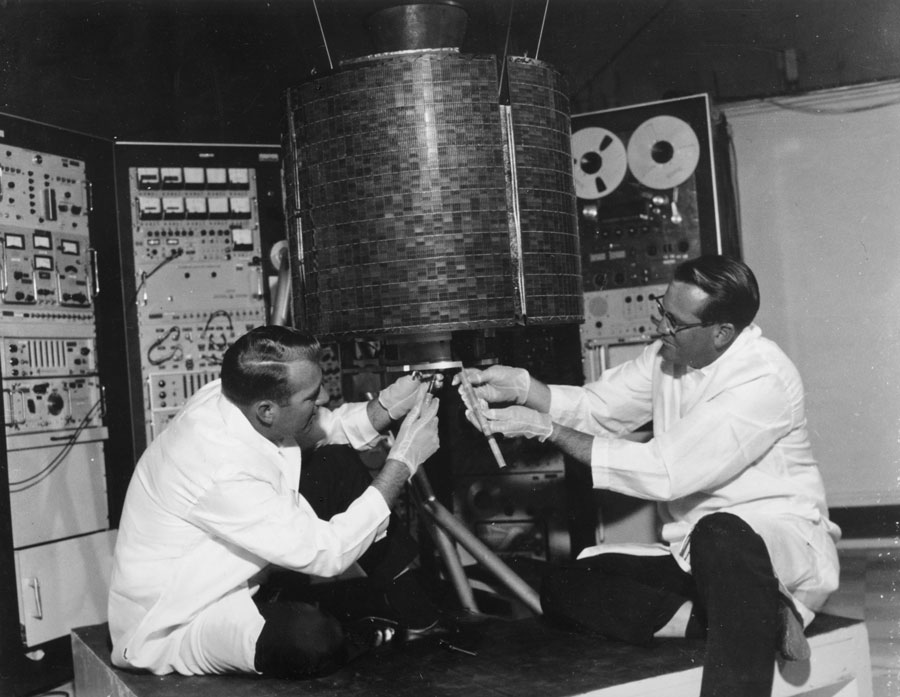
Ed White becomes the first American to take a spacewalk. Developing spacesuit technology and spacewalking skills were crucial to our plans in space.
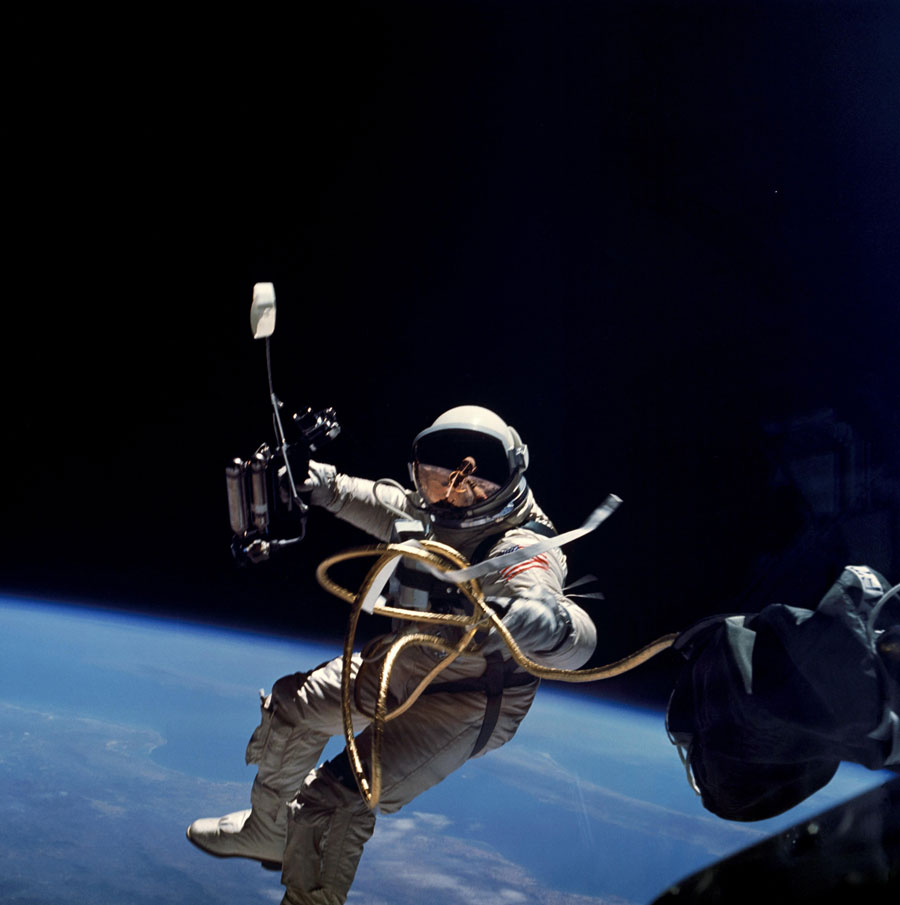
A fire on the launch pad kills the first Apollo crew: Gus Grissom, Ed White and Roger Chaffee. NASA responded to this crushing loss by overhauling the Apollo spacecraft design and developing the processes and procedures that allowed us to safely conduct the rest of the Apollo program.
